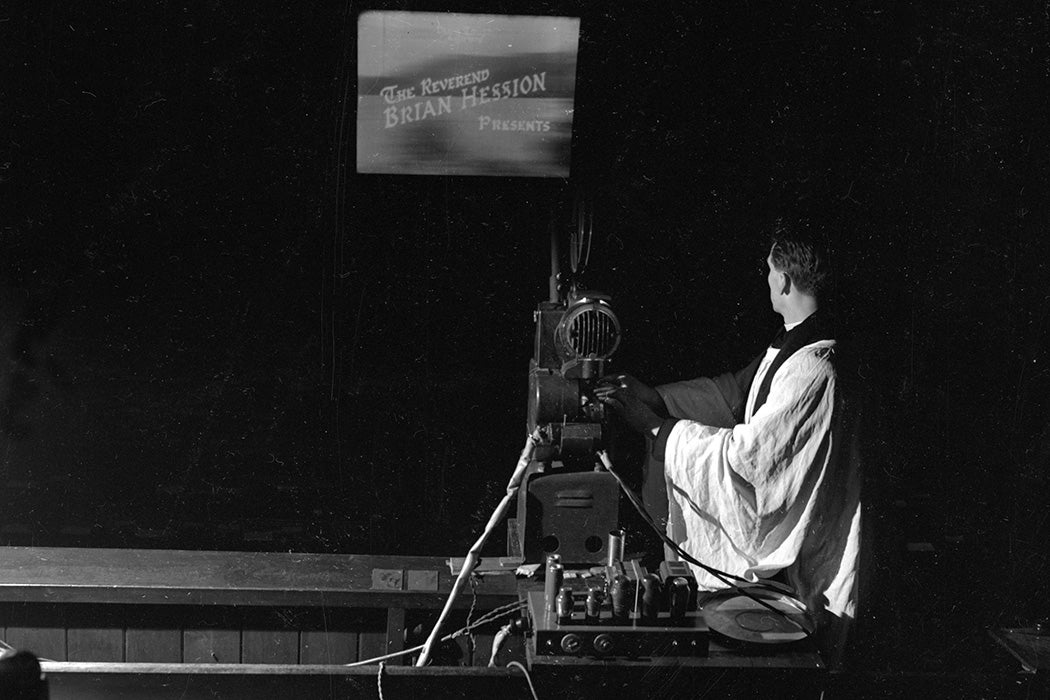Inevitably, the media we have access to shapes our view of the world. As religion and media scholar April Makgoeng writes, that was true in an especially striking way for Americans in the 1930s. For many, the nearly exclusive source of information about life in Africa and Asia came from Protestant missionaries and, particularly, the films they made.
Starting in the nineteenth century, Makgoeng writes, missions shared information about their activities overseas to win financial support and volunteers for their work. They wrote books, spoke before church youth groups and civic organizations, and even put on stage plays.
By the 1910s, some amateur filmmakers among the missionaries began making their own movies to share with audiences at home. But the creation of mission movies really kicked off in 1925, when wealthy philanthropist William E. Harmon created the Religious Motion Picture Foundation (RMPF). Its first series, created in 1931 in consultation with mission leaders, presented American intervention as a solution to specific problems in Africa and India, such as unsanitary living conditions. Shown in Sunday school classrooms, the films sought to present missionaries as solving people’s material problems rather than just preaching the gospel.
Makgoeng writes that the foundation followed this up with a 1936 film titled Africa Joins the World, which, according to a publicity pamphlet, promised to show church members “the beauty and mystery of Africa,” the “strange customs of her primitive people,” and, of course, the “tremendous need” to which missionaries were called to respond.
These films were made by cobbling together existing footage. But in 1938, RMPF and other supporters created the Africa Motion Picture Project, which began filming on location in different parts of the continent. The resulting movies portrayed “pagan” African people as childlike and happily guided by the parental figures of white missionaries. These remained in use for more than a decade.
Following World War II, Makgoeng writes, missionary filmmakers turned to fictional films, such as My Name is Han (1948); it was filmed on location in China with all Chinese actors. Echoing the themes of the previous documentaries, it showed a man converting to Christianity after doctors at a missionary clinic save his son’s life. Along with church screenings, the movie played at mainstream theaters and received positive reviews in publications including Film Daily and the Los Angeles Times.
Weekly Newsletter
The next year, Kenji Comes Home portrayed a returning Japanese soldier choosing between support for communism or Christianity. Although the movie was scripted, it used nonprofessional actors, was shot on location, and focused on real socio-political issues, which qualified it for an Oscar nomination as a documentary by the standards of the time. Again, the movie was a hit with an audience that extended beyond church communities.
However, by this time, Christian filmmakers were increasingly making religious films on a number of topics, crowding out missionary movies at church events and schools. And with the media landscape changing, there were a growing number of other sources of information about the “developing world” available to Americans.







